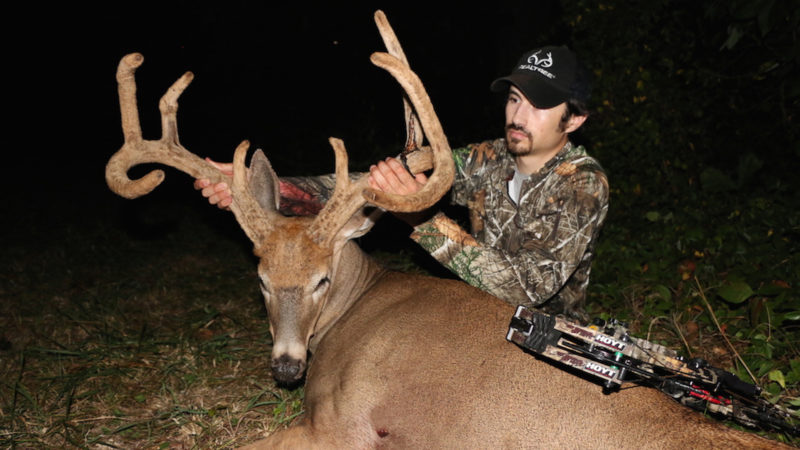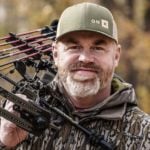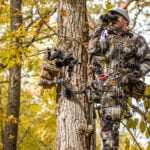When is the best time to kill your buck? Some would quickly say the rut is without a doubt the best time to kill a buck each year. And while the rut typically produces some of the liveliest deer hunting action of the year, it may not necessarily be the best time to kill one of your home-body bucks that have made your farm their hangout.
So laying the rut aside, let’s focus on the early season and the late season. These can be an excellent time to catch a familiar buck making the rounds. However, when it comes to early season vs. late season, which is better?
Truth is, they both have their pros and cons. Let’s dig in a little deeper below and take a look.

Strike Early
The early season can provide one of the greatest opportunities of the year to hunt unpressured deer. That’s why the velvet buck hunts are growing in popularity for many states, particularly across the south. Deer are on one of the most predictable patterns of the year at this time as they feed in and around agriculture fields.
However, when the velvet comes off, bucks immediately become a different creature. It can happen overnight, and the switch will be flipped causing normal buck patterns to drastically change. The bucks that once made daily jaunts past your trail cam have now disappeared. There’s a major shift in whitetail behavior when the velvet comes off.
The bucks are likely still close by, but they will become less visible. They will begin to hold tighter to cover and bedding areas. The key at this point is to find food sources closer to the bedding areas and cover bucks will frequent prior to moving into larger ag fields and destination food sources overnight.

The early season allows you to take advantage of the bucks that call your property home. The days will soon come when he leaves your property in search of receptive does. For now, however, the early season remains a great option for punching a tag on the buck you’ve developed history with as a local homebody.
How do you kill him in the early season?
Move in tighter to the cover. Locate early-drop acorns close to cover and bedding areas. These feed trees will be obvious by the amount of deer sign beneath them. Mobile hunting setups are the trick for this style of hunting. Just remember, the wind will make or break your opportunity when moving in closer to a buck’s bedding area. Don’t gamble on the wind here. Make your move when the conditions are right and punch your tag on the first sit.
Late is Still Great
If you don’t manage to punch a tag on your local buck during the early season, and he manages to survive the rigors of the rut, the late season can be a fine time to make it happen before the buzzer. Survivors of the rut will likely return to their core area after doing their part during the rut.
Rest and survival will be the focus of bucks at this time. The rut takes a brutal toll on a mature buck and recovery efforts won’t come easy. They are slim, worn down and in desperate need of quality food sources for survival. Such food sources are typically few and far between at this time of year. That’s why if you have the late-season food on the landscape, you can often experience the best hunts of the season in the final days.
Deer often become predictable again in the late season. Again, they are driven by their need to refuel. Once they key in on an available food source, they’ll often continue to feed on that location, like clockwork, until the resources are exhausted.

With food sources limited, you’ll have to do the scouting and legwork to determine where the herd is hanging out. This is easily accomplished with trail cams and binos or a spotter. Fortunately, larger ag fields and destination plots are the focus of deer in the late season. Even better, they’ll now be arriving to these fields well before daylight when the temperatures have dropped.
A ground blind or elevated shooting house can be your best friend here. They not only offer cover and concealment, but they do an excellent job of protecting you from the elements, cold weather and wind, as well as help contain your scent from hitting a deer’s nose. Regardless of your thoughts on hunting from a deer blind or shooting house, they can certainly be a welcomed addition to any late-season deer hunt.

How do you kill him in the late season?
Trail cameras placed around potential late-season food sources will help you home in on where deer are consistently feeding. Even better, make the rounds with your optics to see when and where deer are feeding, as well as confirm that a buck worthy of your tag is in the mix. Unharvested soybeans, winter wheat, or corn stubble fields are hotspots for deer at this time. Again, deer are desperate for food at this time of year. Quality or quantity, they’ll typically take what they can get.
Get into your stand early, play the wind perfectly, and you just might punch a late-season tag on the buck you’ve battled all season.

Outdoor writer, Josh Honeycutt, says his biggest bucks are early or late-season harvests. “I really like hunting late-season bucks that are on bed-to-feed patterns,” he says. “But the only thing better is hunting early season bucks on the same. It’s the same concept, really. That said, with the latter, hunting pressure is minimal, most bucks aren’t in freezers yet, and well-timed cold fronts are king. All said, I rank the phases as early season, late season, pre-rut and the rut as last. In fact, the rut is my least favorite time of deer season.”
Early or late season, which is better? The truth is they can both pay off in big bucks for the hunter that’s done the homework to know where deer are hanging out to bed and where they prefer to feed at any given time.
What about you? When is your favorite time to hunt? Comment below and let us know.

 By
By 



